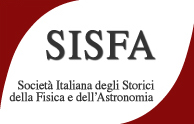Speaker
Description
Eugenio Beltrami (1835-1900) was a mathematician of considerable importance in Europe during the late 19th century. Furthermore, he cultivated an interest in music, encompassing both theoretical and practical domains. Evidence for this can be found in extant notes and a paper entitled La teoria della scala diatonica that were published in the Rendiconti dell'Istituto Lombardo in 1882. The present paper undertakes an analysis of Beltrami's writing, with particular attention to its placement within the context of his era.
Beltrami's paper was written at a time when the foundations of both music and mathematics were being debated. Music, because if the purely mechanistic (physical and physiological) explanation of the auditory experience had reached its maturity with the contribution of Helmholtz, it had meanwhile shown its limits in explaining fundamental phenomena such as consonance, which required a psychological explanation. Mathematics because of the birth of a new branch of it, born of the crisis of Euclidean geometry, known as modern mathematical physics, which took as its principles statements external to mathematics, while maintaining its axiomatic approach.
Beltrami applied the new mathematical physics to music, assuming few acoustic properties and exploiting the great deductive power of mathematics. His work can be seen as a forerunner of modern mathematical music theory (a new branch of mathematical physics). Faced with criticism of the mechanistic view of acoustics, he felt free to adopt an aesthetic criterion, seeking beauty in the proportions of intervals, so that his approach was somewhat closer to the music theory of the ancient Greeks than to that of his contemporaries, relying more on mathematics than on acoustics.

